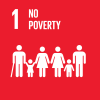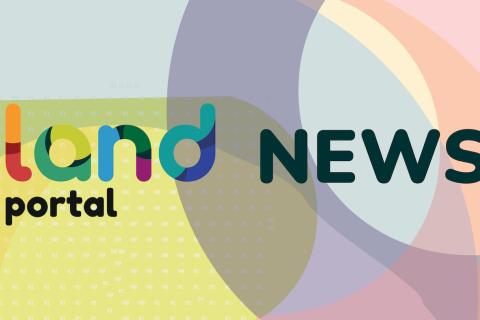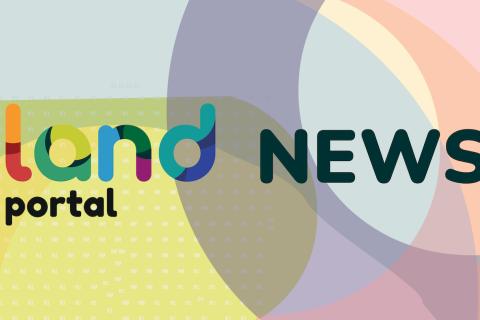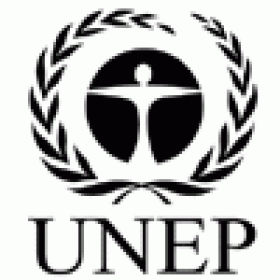
Proportion of total adult population with secure tenure rights to land, with legally recognized documentation and who perceive their rights to land as secure, by sex and by type of tenure.
Last updated on 1 February 2022
This indicator is currently classified as Tier II aiming to achieve Tier 1 status in 2022. The United Nations Human Settlements Programme (UN-Habitat) and the World Bank are the main Custodian agencies with the Food and Agriculture Organization of the United Nations (FAO) and United Nations Environment Programme (UNEP) as partners.
Unit of measure: Proportion of people with legally recognized documentation of their rights to land out of total adult population, disaggregated by sex (%); Proportion of people who perceive their rights to land as secure, out of total adult population disaggregated by sex (%)
Why is this indicator important?
Access to land is central to ending poverty and gender inequality as well as contributing to food security. Securing tenure rights for all will ensure sustainable social and economic opportunities needed to eradicate poverty (SDG1), as well as contribute to the achievement of SDG2 on eradicating hunger, SDG5 on gender equality and empowerment of women, SDG11 on building inclusive, resilient, and sustainable urban areas, SDG15 on reducing land degradation and SDG16 on fostering peace and security.
Access to regular, quality and sex disaggregated data on land tenure rights is key for policy decisions in transforming the land sector with regard to responsible land governance and gender equality. The indicator contributes to tracking of progress on other global and regional commitments on land governance and development frameworks such as the Voluntary Guidelines on the Governance of Tenure (VGGT), the New Urban Agenda and the Africa Union Framework and Guidelines on Land Policy in Africa and Agenda 2063. The indicator facilitates comparability of data between countries, which will also support regional and global advocacy and help identify good practice which can influence the development of land governance policy by various stakeholders at the national, regional, and international level.
How is the indicator measured and monitored?
According to the metadata document, the two sub-indicators provide complementary datasets drawing on censuses, national multi-topic household surveys, demographic and health surveys, urban inequity surveys, and, depending on availability, administrative data on land tenure as reported by land registries, cadasters, or relevant ministries. The indicator covers all tenure types, e.g., freehold, leasehold, public land, and customary land. Legal documentation goes beyond evidence of land ownership and includes also other legally enforceable documentation of rights to land. The perception of tenure security refers to an individual’s perception of the likelihood of involuntary loss of land regardless of the formal status.
According to the SDG Indicators Database managed by the United Nations Statistics Division (UNSD), a total of 34 countries had reported data on SDG indicator 1.4.2 as of June 2021. FAO, UN-Habitat and World Bank developed a joint module covering data requirements for both 1.4.2 and 5.a.1 that is freely accessible and includes the essential questions required for these two indicators, and detailed guidance on how to integrated these in national survey instruments already in place.
By Anne Hennings, peer-reviewed by Everlyne Nairesiae, GLII Coordinator at the Global Land Indicators Initiative (GLII) at GLTN, Un-Habitat and Clinton Omusula, Land Data and Knowledge Management Specialist at the Global Land Indicators Initiative (GLII) at GLTN, UN-Habitat, and the World Bank.
Official indicator data
The number of men and women with documented evidence of secure tenure rights to individually or communally held land, property and natural resources divided by the total number of adult population surveyed x 100.
* Select "year" below to see the most recent data for more countries.
| Indicator | Min-Max Number of years |
Countries / Obs | Min / Max Value |
|---|---|---|---|
| Proportion of adult population (both sexes) with legally recognized documentation on land | |||
| Proportion of people (both sexes) who perceive their rights as secured | |||
| Proportion of women with legally recognized documentation on land |
Other related indicators on the Land Portal
These Prindex indicators provide further data relevant to SDG indicator 1.4.2.
Statement by the SDG land momentum group in response to the political declaration of the SDG summit
Nearly five years into the implementation of the ground breaking global commitments of the 2030 Sustainable Development Agenda, the time is upon us to consider what has been accomplished so far and to set the tone for action that will enable the world to meet its ambitious goals.
How much does the world spend on the Sustainable Development Goals?
Pouring several colors of paint into a single bucket produces a gray pool of muck, not a shiny rainbow. So too with discussions of financing the Sustainable Development Goals (SDGs). Jumbling too many issues into the same debate leads to policy muddiness rather than practical breakthroughs. Financing the SDGs requires a much more disaggregated mindset: unpacking the specific issues, requiring specific resources, in specific places.
Status of SDGs Land Indicators: Overcoming the Barriers and Bridging the Yawning Data Gaps
The inclusion of Sustainable Development Goal 1.4.2 and other land related indicators in the 2030 agenda remain a key achievement for global monitoring of land rights.
Rural land reform is central to reducing poverty and migration to cities
Millions of peasant farmers in the rural areas of Sierra Leone do not own land of their own but have to rent from land owning families. Added to their poverty is the fact that they depend on Shylock money lenders to secure seeds and capital for their farming activities.
At the end of the day, their harvests are not only meagre but most it goes to paying debt and interest that are trapping them in a vicious circle of poverty, which when looked at closely are responsible for the majority of youths abandoning the countryside for life in the city.
Pagination
Securing Community Land Rights: Priorities and Opportunities to Advance Climate And Sustainable Development Goals
Legally recognized and secure land and resource rights are fundamental to the advancement of global peace, prosperity, and sustainability. From the development of human cultures to the realization of democracy itself, tenure security underpins the very fabric of human society and our relationship to the natural environment.
Updates on SDG Land Indicator 1.4.2
This bulletin is prepared by the Friends of the Custodians Committee. The objective is to share timely information about the SDG land indicator 1.4.2 and support its reclassification from Tier III to Tier I by October 2018.
Land and the SDGs: Let's Start with Evidence
International Land Coalition infographic on why Land Rights are central to achieving the SDGs.
Key Messages and Recommendations for the Expert Group Meeting on Women's Land Rights
We are a diverse group, women and men, from all regions of the world who came together in this EGM convened by Global Land Indicators Initiative, UN Habitat, Oxfam, Landesa, Huairou Commission and UN Women.
UN High-Level Political Forum Side Event- July 10 2017
The UN-Habitat, World Bank and the Global Land Tool Network (GLTN) host of the Global Land Indicators Initiative (GLII) 1 in collaboration with Global Donor Working Group on Land (GDWGL)2 jointly hosted a side event titled Land Tenure Security Monitoring in the SDGs: Leaving no one behind at the 2 nd High-level Political Forum on Sustainable Development (HLPF).
Pagination
![]()

By 2030, ensure that all men and women, in particular the poor and the vulnerable, have equal rights to economic resources, as well as access to basic services, ownership and control over land and other forms of property, inheritance, natural resources, appropriate new technology and financial services, including microfinance
Indicator details
The indicator is conceptually clear, has an internationally established methodology and standards are available, but data is not regularly produced by countries.
Key dates:
Experts reach consensus on measuring Indicator 1.4.2.
Experts agree on a set of household survey questions that will be included in the global and national-level surveys and censuses to measure how secure peoples’ land and property rights are.
IAEG-SDG recommends deleting Target 1.4
Global Donor Working Group on Land (GDWGL) confronts IAEG-SDG recommendation to delete Target 1.4.
3rd Expert Group Meeting: Using Administrative Data to Monitor SDG land
Particularly, the objectives of this EGM were to agree on the methodology to monitor indicator 1.4.2 pertaining to legally documented rights using administrative data and to assess availability of existing data and explore ways of institutionalizing reporting at country and regional level.
Sixth meeting of the IAEG-SDGs
Particularly the objectives of this meeting have been to review tier classification. The work of those in the land sector came to fruition when indicator 1.4.2 was finally bumped from Tier III to Tier II status.
High-Level Political Forum 2021
The ministerial declaration of the high-level segment of the 2021 session of the Economic and Social Council and the high-level political forum on sustainable development reiterated the urgency to ensure women’s equal access to, and control over, land and natural resources.
Twelfth meeting of the IAEG-SDGs
VNR Lab 4: How data is guiding sustainable recovery from COVID-19 for achieving the SDGs
The VNR lab will provide a platform for countries to share their experiences-both successes and challenges-in planning and preparing an evidence-based and data-driven VNR in the time of COVID-19. Data and statistics are guiding countries' effort in combating the virus, saving lives and recovering better. Over the last year, countries have faced unprecedented disruptions in statistical operations and a spike in demand for data to monitor and mitigate the effects of the global pandemic.
Eleventh meeting of the IAEG-SDGs
Counted and visible: Global conference on the measurement of gender and intersecting inequalities
Counted and Visible: The global conference on the measurement of gender and intersecting inequalities will create a common understanding among data users and producers on how to measure intersecting inequalities from a gender perspective in order to 'leave no one behind.' It will contribute to current work on data disaggregation to better inform policies and advocacy on gender equality and women's empowerment. The conference will also be a space for dialogue on gender and intersectionality, to have a better understanding on the needs of the most marginalized groups.
This event is co-organized by UN Statistics Division and UN Women.












